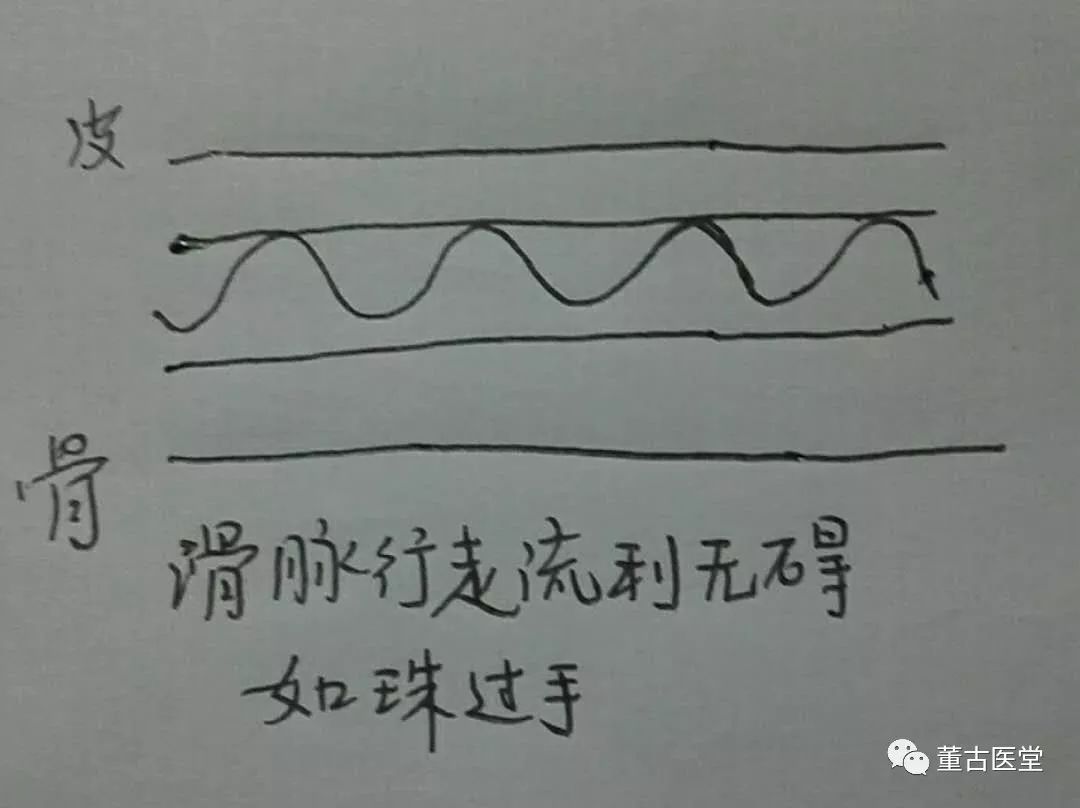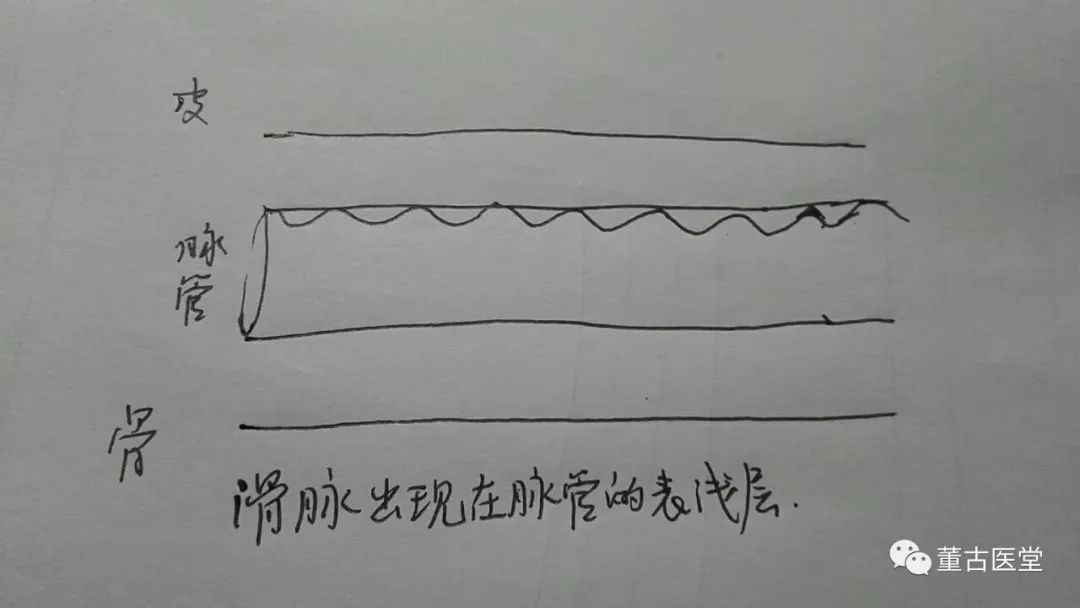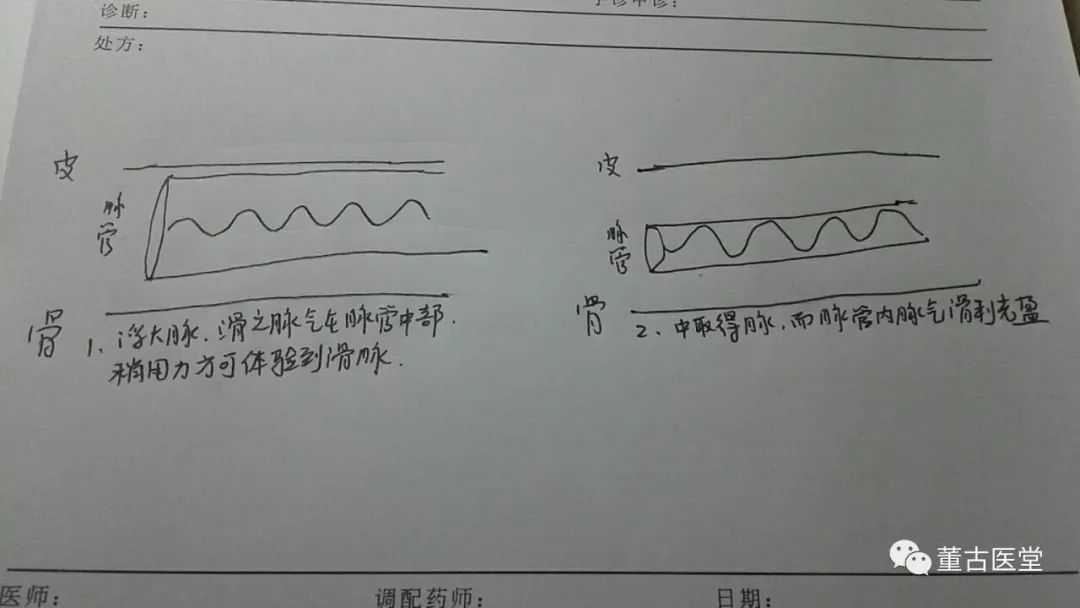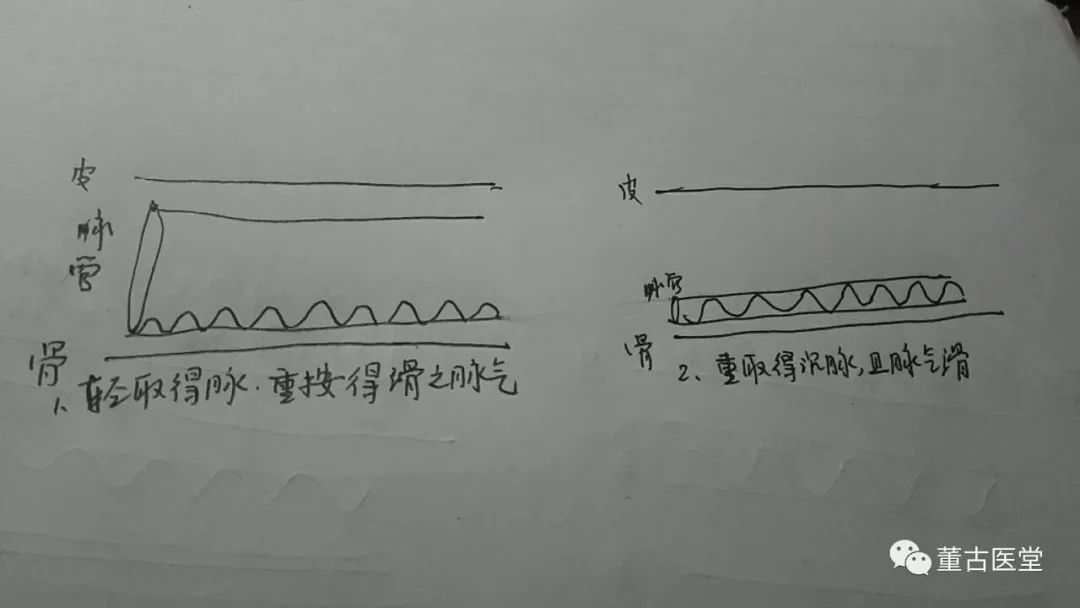The slippery pulse (hua mai) is one of the more common pulse types encountered in clinical practice.
The slippery pulse is a manifestation of the accumulation of body fluids.
Excessive nutrition and accumulation can lead to a slippery pulse. Therefore, a slippery pulse often indicates phlegm disorders. This is quite vivid, as some patients may expel phlegm that is thick and viscous like glue, which represents the accumulation of undigested nutrients. Many children with food stagnation exhibit a slippery pulse in the right guan position.
Another situation that can present with a slippery pulse is the presence of excess heat that burns and condenses body fluids. This typically occurs in patients with heat accumulation without damage to the fluids, or in those with a history of phlegm-heat patterns. Many patients with a Shaoyang syndrome may experience a bitter taste in the mouth and fullness in the chest and hypochondria, with a slippery pulse observable in the left guan position. This slippery pulse is characterized by a smooth and forceful quality, indicating phlegm-heat.
What does a slippery pulse feel like?
It should be noted that the slippery pulse is a manifestation of the pulse qi, rather than the pulse shape. It is a state of the qi within the pulse. It is perceived from the internal qi of the pulse, rather than from the superficial appearance of the pulse.
The slippery pulse feels like rolling beads. This is the most vivid description of the slippery pulse, referring to the flow of qi within the pulse vessel moving like beads rolling over the fingers, rather than the pulse vessel resembling a string of beads.


The slippery pulse has its own characteristics compared to other pulse types. For some pulses that are relatively floating and large, careful observation reveals that the slippery pulse can occur in different locations within the pulse vessel: at the superficial level, in the middle, or at the deep level.
The slippery pulse qi appearing at the superficial level is equivalent to a floating slippery pulse.

After obtaining the pulse at the fingertips, gently pressing on the pulse vessel allows one to feel the pulse qi flowing beneath the pulse skin like waves, with slight fluctuations that are often difficult to detect without careful attention.

This floating slippery pulse often indicates a relatively light and shallow degree of phlegm-accumulation.
It often appears simultaneously in the cun, guan, and chi positions, and for this pulse type, I usually choose Xiao Xian Xiong Tang (Minor Sinking the Chest Decoction). As stated in the “Shang Han Lun”: For minor chest disorders located beneath the heart, pressing it causes pain, and if the pulse is floating and slippery, Xiao Xian Xiong Tang is indicated. This situation is often seen in patients who develop a lot of phlegm, with phlegm that is purulent and green, a few days after a cold; using Xiao Xian Xiong Tang to eliminate phlegm is also quite effective. Patients often report that the phlegm rapidly diminishes.
The slippery pulse qi appearing in the middle. 1. Floating pulse with slippery qi upon pressing. 2. Middle pulse with slippery qi upon pressing.

The appearance of this type of slippery pulse may indicate a significant accumulation of phlegm, as well as the possibility of excess heat or phlegm-heat accumulation. At this level, it gives a feeling similar to rolling beads.
A slippery pulse that is smooth or slow often indicates phlegm-accumulation. A slippery pulse that is forceful often indicates excess heat or phlegm-heat accumulation.
A floating and tight pulse in the right cun position, with a forceful slippery quality upon pressing, indicates wind-cold obstructing heat, suggesting the use of Da Qing Long Tang (Major Blue Dragon Decoction) or Ma Xing Shi Gan Tang (Ephedra, Apricot Kernel, Gypsum, and Licorice Decoction). This is commonly seen in children with colds and coughs.
A middle slippery pulse in the right cun position indicates significant phlegm-accumulation in the chest, suggesting the use of Gua Lou Xie Bai Ban Xia Tang (Trichosanthes, Chinese Chive, and Pinellia Decoction), with the addition of ingredients like Qian Hu (Hogfennel), Dong Gua Ren (Winter Melon Seed), and Jin Qiao Mai (Buckwheat) as needed.
A middle slippery pulse in the right cun position that is forceful indicates lung heat or phlegm-heat, suggesting the use of Qian Jin Wei Jing Tang (Thousand Gold Reed Decoction) with modifications. I once treated a child who had a high fever and severe itching at night, with skin lesions. Upon pulse diagnosis, I found a forceful slippery pulse in the middle of the right cun position, and using Qian Jin Wei Jing Tang with modifications led to a rapid recovery.
A middle slippery pulse in the left cun position is often seen in patients with frequent dreams and difficulty sleeping, who are easily startled and anxious, and responds well to Wen Dan Tang (Warm the Gallbladder Decoction). If the pulse is forceful, Da Zhi Shao San (Guide Red Powder) may be used.
A middle slippery pulse in the right guan position indicates phlegm-accumulation or food stagnation, commonly seen in children. The use of Er Chen Tang (Two Aged Decoction) with Ping Wei San (Calm the Stomach Powder) is recommended.
A middle slippery pulse in the right guan position that is forceful indicates phlegm-heat. Depending on the situation, Ban Xia Xie Xin Tang (Pinellia Decoction for Draining the Heart) may be chosen.
A middle slippery pulse in the left guan position often indicates phlegm-accumulation in the chest and hypochondria, suggesting the use of Xiao Chai Hu Tang (Minor Bupleurum Decoction).
A deep slippery pulse in the chi position is often forceful. Depending on the situation, Bai Tou Weng Tang (Pulsatilla Decoction), Si Miao San (Four Marvels Powder), Zhu Ling Tang (Polyporus Decoction), or Tao He Cheng Qi Tang (Peach Pit Decoction) may be selected. I remember when my son was three years old, he had dysentery with pus and blood, with dozens of bowel movements a day. Upon pulse diagnosis, I found a floating and wiry slippery pulse in the middle of the right chi position, and using Bai Tou Weng Tang with modifications led to a rapid recovery.
The slippery pulse qi appearing at the deep level requires firm pressure to feel.

This situation represents a very deep accumulation of phlegm. At this level, the slippery pulse truly feels like beads beneath the fingers.
This pulse type, appearing in the right guan chi position, suggests the use of Cheng Qi Tang (Purge the Qi Decoction).
If it appears in the left guan position, depending on the situation, Long Dan Xie Gan Tang (Gentiana Decoction for Draining the Liver) may be used.
If it appears simultaneously in both guan positions, Da Chai Hu Tang (Major Bupleurum Decoction) with modifications may be indicated.
Welcome to exchange and correct with fellow practitioners!
Dr. Dong (WeChat ID: 13310830760)


